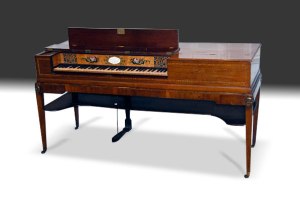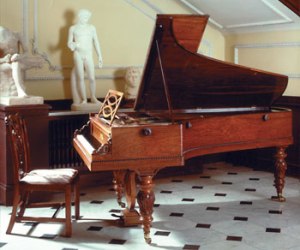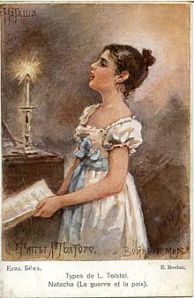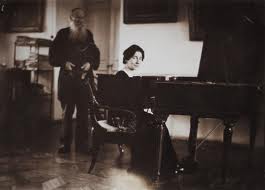In a recent televised interview, the writer Julian Barnes said that of all the pages that were re-written in a novel, the first page was the one that had the most revisions. That seems to apply to the opening of a blogpost too, as I’ve discovered as I’ve sought to encapsulate final thoughts on John Field and his Nocturnes before moving on to other composers. Each time I attempt to pen my definitive closing remarks, another new fact or lead emerges which unveils yet another layer of fascination, causing many a diversion and yet another abandoned draft. Anyway, here goes – a last attempt at closure.
 John Field really was the right man in the right place at the right time. It seems an extraordinary coincidence that the creator of the piano Nocturne spent many formative years demonstrating the instrument in the showrooms of one of the leading makers – Clementi – when the piano was undergoing exciting innovations, both in its action, the compass of its keyboard, and the use of the pedal. [Click here for more about the Clementi piano in the RCM Museum.] Also, the composers Boieldieu and Steibelt were introducing the use of symbols for pedalling into their printed music – and both Boieldieu and then Steibelt lived and worked in St Petersburg, as did Field. And what would a Nocturne be without the use of the pedal?!
John Field really was the right man in the right place at the right time. It seems an extraordinary coincidence that the creator of the piano Nocturne spent many formative years demonstrating the instrument in the showrooms of one of the leading makers – Clementi – when the piano was undergoing exciting innovations, both in its action, the compass of its keyboard, and the use of the pedal. [Click here for more about the Clementi piano in the RCM Museum.] Also, the composers Boieldieu and Steibelt were introducing the use of symbols for pedalling into their printed music – and both Boieldieu and then Steibelt lived and worked in St Petersburg, as did Field. And what would a Nocturne be without the use of the pedal?!
Field’s first Nocturnes were published in 1814. What a perfect name for a piece, a term coined in a language which was not his own by an Irishman transported far from his native Dublin, catapulted into the French-speaking Russian aristocracy. Is there another musical title in the Romantic period which is so concisely evocative? Perhaps Humoreske, but Nocturne is the title which has caught the imagination of composers from Czerny -with whom Field stayed when visiting Vienna in 1835 – to Samuel Barber, whose Nocturne of 1959 is sub-titled Homage to John Field.
And Camille Pleyel composed a Nocturne à la Field in 1830; his firm supplied pianos to Chopin, who dedicated his Nocturnes Op 9 to Camille Pleyel’s wife. [Pictured, the Pleyel piano used by Chopin in London, 1848.]
What of John Field’s legacy? He leaves behind him a title and a genre, but during his lifetime his compositions provided teaching material for the next generation of pianists, used by foremost teachers of the time – including Chopin, who used Field’s nocturnes and concertos as part of his pupils’ repertoire. Field himself taught in both St Petersburg and Moscow -even Glinka had three lessons with him, which he never forgot. That wonderful technique, honed by years of practice under the stern, watchful gaze of that eminent pedagogue, Clementi; that creamy sound, commented on by all who heard him – Field’s pupils will have absorbed it all, and will have passed it on.
My own teacher in England, Ronald Smith, studied in Paris with Marguerite Long, but also with a Russian emigré pianist, Pierre Kostanov, who I think must have left Russia after the Revolution. Ronald’s pupils all had a diet of Clementi’s Gradus ad Parnassum, and studies by another Clementi protégé, Cramer. I wish I’d asked Ronald more about Kostanov. It’s a tantalizing thought – are Ronald’s pupils also beneficiaries of Field’s teaching, several generations later? Perhaps. We’ll never know…
And finally, the last word on Field – by Tolstoy, [pictured, right, with Wanda Landowska,] who, in War and Peace, Book 7, Chapter 10, places John Field and his Nocturnes at the heart of aristocratic Russia.
Dimmler, the house pianist of the Rostov family, is asked to play…
 ‘… Mr. Dimmler, please play my favorite nocturne by Field,” came the old countess’ voice from the drawing room.
‘… Mr. Dimmler, please play my favorite nocturne by Field,” came the old countess’ voice from the drawing room.
Dimmler struck a chord and, turning to Natasha, Nicholas, and Sonya, remarked: “How quiet you young people are!”
“Yes, we’re philosophizing,” said Natasha, glancing round for a moment and then continuing the conversation. They were now discussing dreams.
Dimmler began to play; Natasha went on tiptoe noiselessly to the table, took up a candle, carried it out, and returned, seating herself quietly in her former place. It was dark in the room especially where they were sitting on the sofa, but through the big windows the silvery light of the full moon fell on the floor. Dimmler had finished the piece but still sat softly running his fingers over the strings, evidently uncertain whether to stop or to play something else….’


What an absolutely beautiful blogpost! I loved reading this!
Thank you, Elissa! That makes all the effort worthwhile 🙂
I thoroughly enjoyed this piece of writing and music, very many thanks. Although I have adored Chopin’s music for 60 years, and rightly, I have also often felt that Field has been invariably damned with faint praise. That he was so admired by his illustrious contemporaries should alert those who are contemptuous of his compositions to listen again with fresh ears. He wrote beautiful music and spurred his admirers into writing music of similar beauty.
Thanks again for a lovely post! Ritzmar
Many thanks for your kind words 🙂 Yes, Field is rather over-shadowed now!
We can catch Tolstoy out on a slight anachronism. The scene you quote from “War & Peace” is set in 1810, but as you point out earlier, Field didn’t publish his nocturnes until 1814. 🙂
Quite! 🙂
Of all composers for the Piano…Chopin is the Un-disputed King of Composition…dying at only 39 years. His 2nd would have to be Rachmaninov. A marvelous 3rd might be Percy Grainger.
Debussy & Ravel are beyond fantastic.
As strictly a Composer of Music…J. S. Bach is Monarch. Scarlatti is his equal.
Trust Me! Raymond Vaské